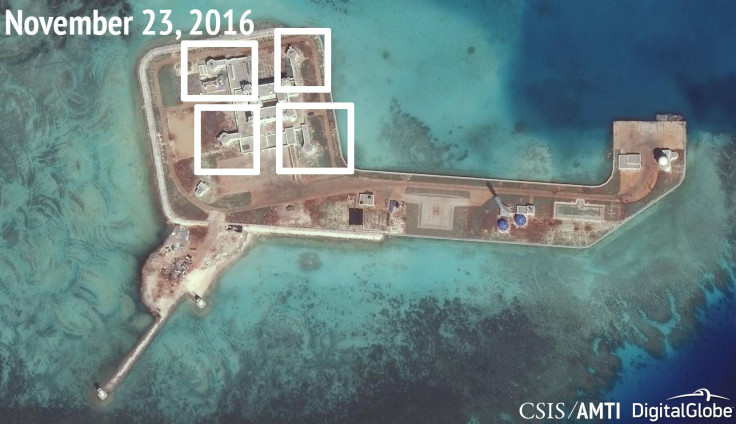China Launches New Research Bases In Disputed Sea While World Distracted by Coronavirus

KEY POINTS
- China launches two research stations on two artificial islands in the West Philippine Sea
- The labs are for supposedly civilian scientific purposes
- While the world is preoccupied with the coronavirus, China is pursuing hegemony in South China Sea
The news headlines are now focused on the biggest story in years, the coronavirus, that has killed over 16,500 people and afflicted close to 400,000. China has weathered the storm, reporting fewer and fewer new cases each day and thus, can continue with activities that were top stories just a few weeks ago regarding the South China Sea.
To recap the South China Sea situation, it is a vital international waterway that handles an estimated $5 trillion worth of global commerce. Aside from a route of passage, the waters are thought to be sitting on vast amounts of oil and gas reserves and are an important source of sea-based food with rich fishing resources.
The sea has several small island chains with reefs and atolls under the sovereignty of the Asian nation in their proximity. In a few cases, the claims of sovereignty overlap. China lays claim to the bulk of the entire South China Sea using an artificial demarcation line known as the Nine-Dash-Line that engulfs the exclusive economic zones (EEZs) of the smaller nations.
The Permanent Court of Arbitration (PCA), an intergovernmental organization located at The Hague in the Netherlands, ruled against China and in favor of the Philippines in a 2016 case that everyone agrees, except China, awards sovereignty of waters and any islands within the Philippines’ EEZ to the South Asian archipelago.
China simply ignores the ruling and continues aggressive actions often encroaching on the Philippine, Vietnamese and Indonesian EEZs in exploratory survey ships often accompanied by armed Chinese Coast Guard ships.
China also has built a series of man-made islands thought to be for military purposes that include harbors, airstrips, missile shelters, communications facilities that expand Beijing's ability to monitor the activities of its rivals.
And here is where it begins to get a bit “fuzzy,” according to Maritime security expert Collin Koh.
China’s state-run news agency Xinhua reported that on March 20, two research stations were recently launched on two of China’s large man-made islands in the West Philippine Sea. One on Kagitingan (also called Fiery Cross) and the other on Zamora (also called Subi) Reef.
The Xinhua report said that the facilities featured labs on ecology, geology and the environment aimed at supporting scientists in field investigation, sampling and scientific research in the Spratlys, a hotly disputed territory in the Philippine waters but also with areas claimed by Vietnam and of course, China.
The labs were under the Chinese Academy Sciences (CAS) who said they planned to “promote innovation capability and the supply of public service products of marine science and technology to meet the needs of both China and other littoral countries around the South China Sea.”
Koh told inquirer.net, “Some may think that the ongoing coronavirus pandemic would have distracted Beijing from these maritime flashpoints. Truth is, this is far from the case. The PLA (People’s Liberation Army) is touted to remain combat-ready despite the coronavirus.”
He continued, “Using these supposedly ‘civilian scientific’ endeavors to assert claim is one such modus operandi and one that’s also often overlooked by all of us. Yet at the same time, the resulting strategic ramifications are not any less insignificant.”
There may truly be research ongoing but there likely is a military angle as well that China is hoping the world will overlook as it focuses on the COVID-19 pandemic.
© Copyright IBTimes 2025. All rights reserved.





















